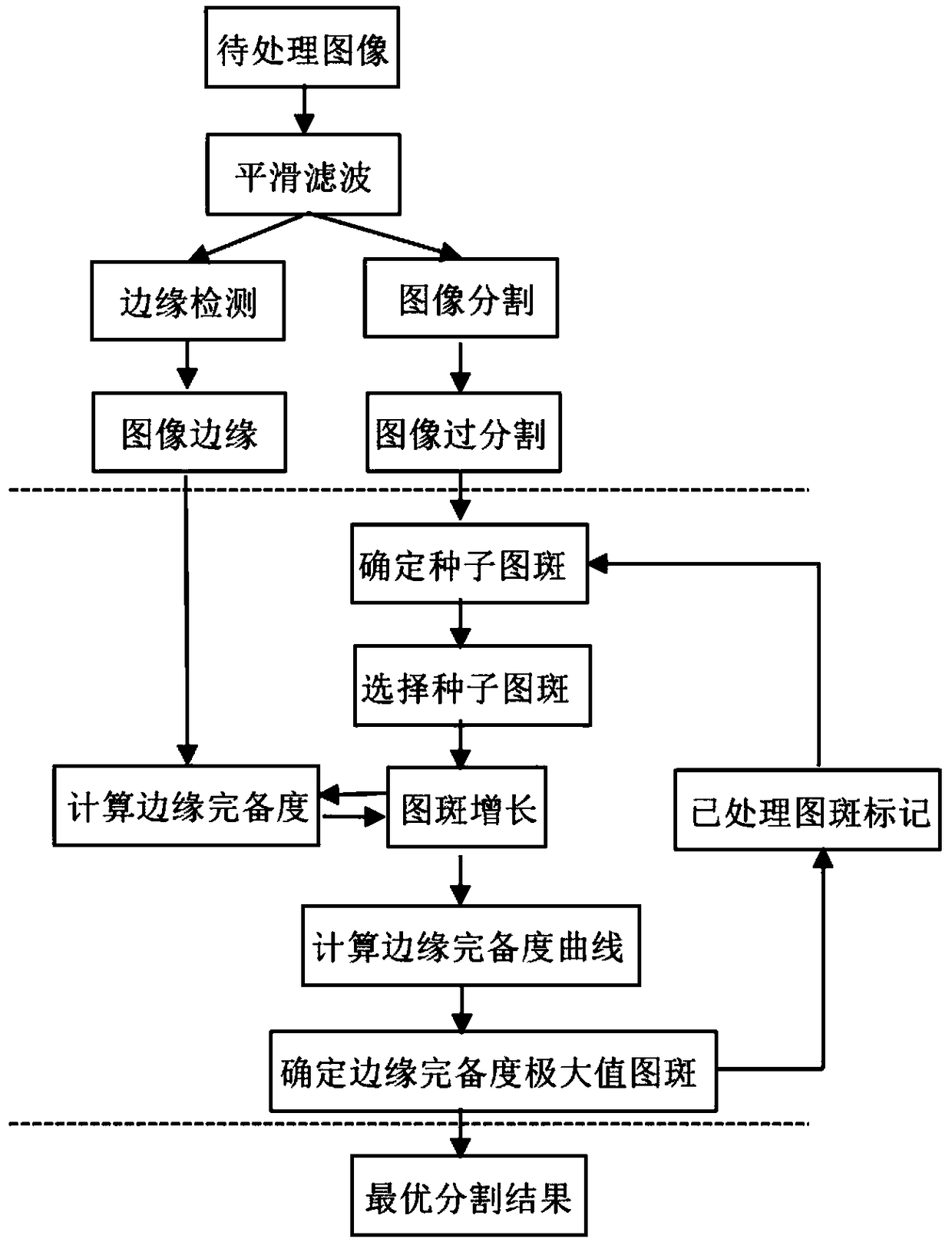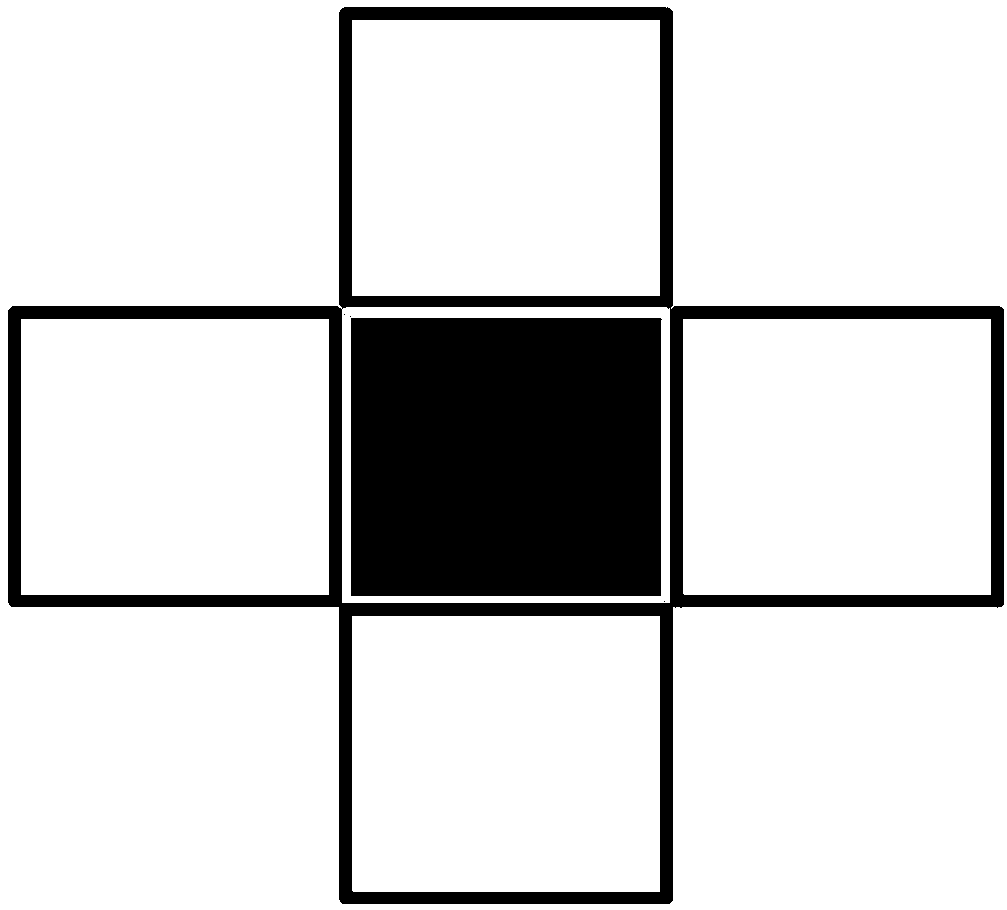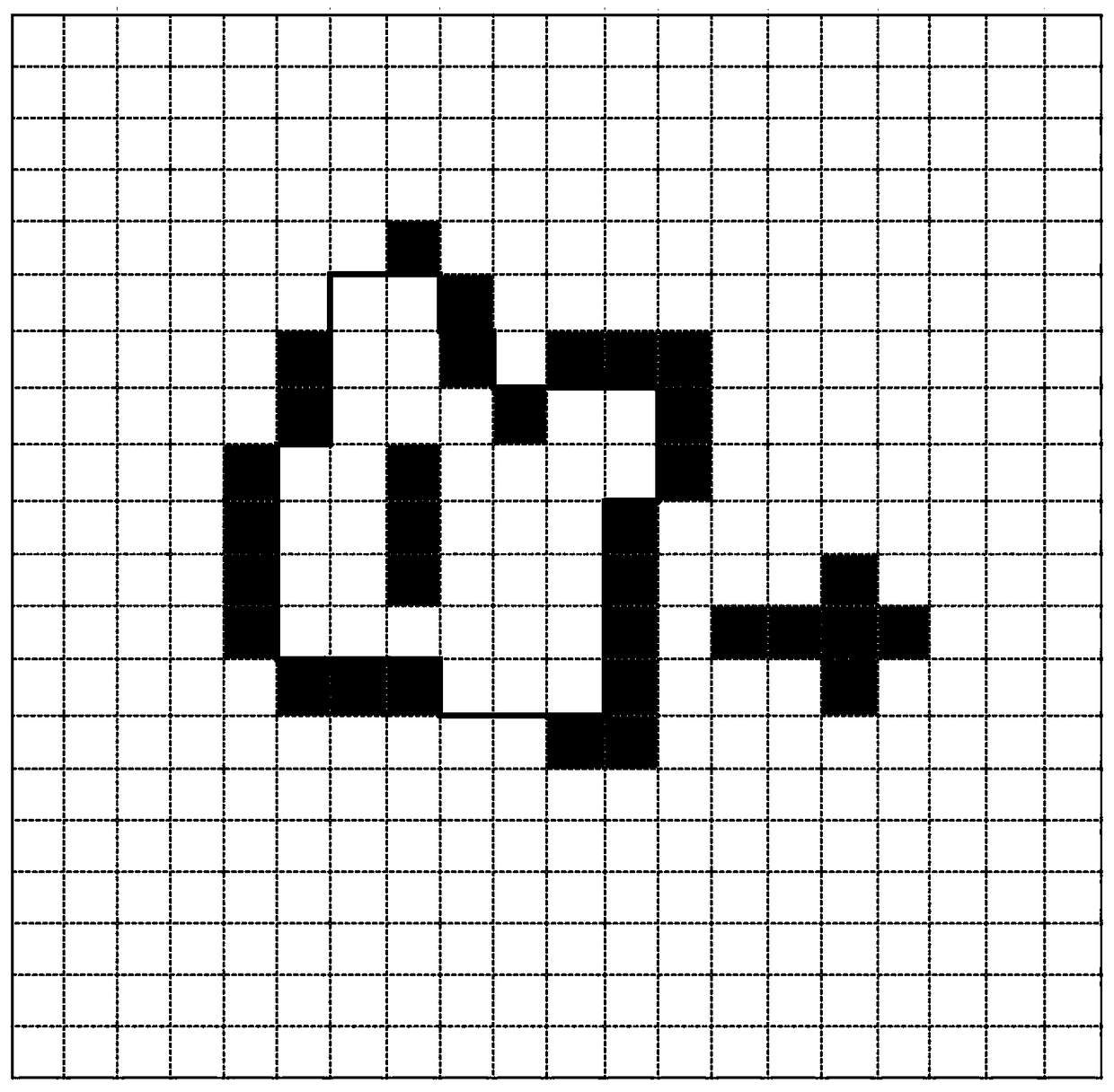An Optimal Recognition Method for Image Segmentation Based on Edge Completeness
A technology of image segmentation and recognition method, which is applied in the directions of image analysis, image enhancement, image data processing, etc. It can solve the problems of insufficient global segmentation ability, difficulty in obtaining closed edges, and insufficient positioning accuracy of edge specific positions.
- Summary
- Abstract
- Description
- Claims
- Application Information
AI Technical Summary
Problems solved by technology
Method used
Image
Examples
Embodiment Construction
[0023] The discontinuity and similarity features of remote sensing image gray values are the basis of remote sensing image segmentation algorithms. According to image segmentation criteria, most segmentation algorithms can be divided into boundary-based and region-based methods. The inner region of the boundary is obtained; the latter gathers pixels with similar gray levels or the same organizational structure to form a region, also known as region-based segmentation.
[0024] An image segmentation optimal recognition method based on edge completeness of the present invention comprises the following steps:
[0025] 1. Use a smoothing algorithm to filter the image to be processed;
[0026] Gaussian smoothing algorithm is used to smooth and filter the data of each band in the remote sensing image using a 3×3 or 5×5 template.
[0027] 2. Use the edge detection method to obtain the edge points of the image to be processed;
[0028] The Canny operator is considered to be the be...
PUM
 Login to View More
Login to View More Abstract
Description
Claims
Application Information
 Login to View More
Login to View More - R&D
- Intellectual Property
- Life Sciences
- Materials
- Tech Scout
- Unparalleled Data Quality
- Higher Quality Content
- 60% Fewer Hallucinations
Browse by: Latest US Patents, China's latest patents, Technical Efficacy Thesaurus, Application Domain, Technology Topic, Popular Technical Reports.
© 2025 PatSnap. All rights reserved.Legal|Privacy policy|Modern Slavery Act Transparency Statement|Sitemap|About US| Contact US: help@patsnap.com



